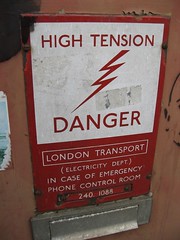I have a guest post up at LDS Publisher today on setting up an author website—you might recognize it if you’ve been around here for a while 😉 .
By parallels, I mean scenes that repeat something from the previous ones, or very recent scenes—the same character goal, level of tension, or even setting. Now, parallels can, of course, be used for good—but they can also be ignored for evil to our detriment.
Parallels for good
Within reason, parallels can show off recurring themes, symbols, and the importance of characters or settings. Well-chosen repetition draws attention to itself unobtrusively—it makes readers sit up and take notice without (“Hey, this is the third scene on the dock; what might that mean?”) without stopping the story.
Parallels to our detriment
 On the other hand, parallels can be over done, or completely unintentional.
On the other hand, parallels can be over done, or completely unintentional.
Scenes in the same setting can be repetitive, and may also be a sign that not enough is moving in the story. Maybe not, of course—you could have the whole thing take place inside a single room, but this may be one area to look at. As with the tension chart, we can look at whether there’s another possible setting that might enhance the conflict or add a new layer of meaning.
Scenes with the same character goal are often a sign that the character isn’t making enough progress. While we definitely don’t want to make things easy for our characters, watching a character fail repeatedly at the same thing wears down the suspense. We may begin not to care whether they’re going to succeed or not, unless each scene has high tension—or the character goal can be refined to relate to the specific events, conflict and disaster for that scene.
But probably most important are the sections where the tension level doesn’t change or varies only slightly for several scenes in a row. In Writing Mysteries, one writer shared some advice from an editor: “I must not try to keep everything at high pitch all the way through a story. Excitement, if too steady, can be as boring as having nothing at all happening” (109).
One way to look at this visually is to use the tension rating from your scene chart. In most spreadsheet software, you can create a line graph from that column of data—Kaye Dacus calls this an “EKG” for your story (you know, an electrocardiogram? Like a heartbeat chart?).
Naturally, at the climax of a book, the tension will be quite high, probably for several scenes. But is the tension flat in there? Are there other “plateaus” or “plains”? Does the tension start (or the promises from yesterday) out much higher than it ends?
If the end isn’t satisfying because it doesn’t match the tension of the rest of the book, don’t lower the suspense! Fix the end!! Change things up in plains and plateaus—if you can, add what looks like a reprieve, or a rest for a little bit before plunging them back into danger.
What do you think? How else can parallels point out problems with suspense?
Photo credit: Redvers




